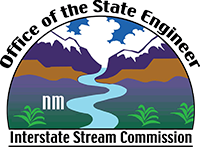Middle Rio Grande
The river reach considered the Middle Rio Grande includes its tributaries from Otowi Bridge, located on State Highway 4, near the San Ildefonso Pueblo, to Elephant Butte Dam. The only perennial tributary is the Rio Jemez while large ephemeral tributaries include the Rio Puerco, Rio Salado and Rio Galisteo.
Four reservoirs are located within the Middle Rio Grande reach as defined above: 1) Nambe Reservoir, 2) Cochiti Reservoir, 3) Jemez Canyon Reservoir, and 4) Galisteo Reservoir. Congress authorized all four as part of the Middle Rio Grande Project for the primary purpose of flood and sediment control. Nambe Reservoir is located on an ephemeral tributary of the Rio Grande upstream from Cochiti while two others are located on ephemeral tributaries downstream from Cochiti. Cochiti Reservoir is located on the main stem of the Rio Grande about 50 miles north of Albuquerque.
The Middle Rio Grande is the most densely populated region in New Mexico and contains more than half of New Mexico’s population, most of whom live in the cities and towns of Albuquerque, Santa Fe, Rio Rancho, Belen, and Socorro. Most of Bernalillo, Sandoval, Valencia, Socorro, Cibola, Santa Fe, and Los Alamos counties fall within the Middle Rio Grande. The Middle Rio Grande and the Socorro/Sierra Water Planning regions are both included in the Middle Rio Grande.
The New Mexico Interstate Stream Commission is a member of the Middle Rio Grande Endangered Species Collaborative Program that is organized to protect and improve the status of endangered species along the Middle Rio Grande of New Mexico while simultaneously protecting existing and future regional water uses. Two species of particular concern are the Rio Grande silvery minnow and the southwestern willow flycatcher. This partnership involves 20 current signatories consisting of federal, state, and local governmental entities, Indian Tribes and Pueblos, and non-governmental organizations.
